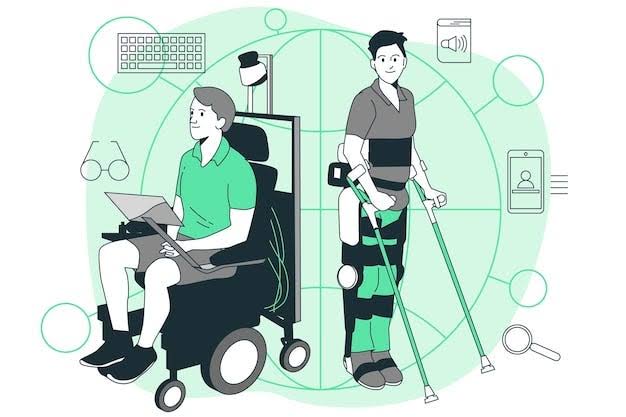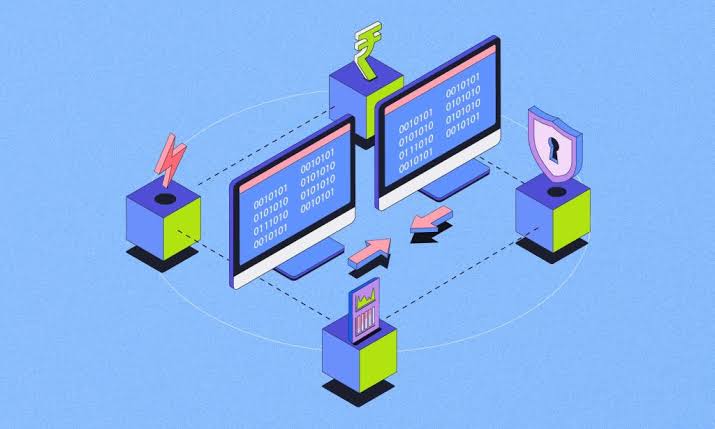Technology has become one of the most powerful tools for creating inclusive societies, particularly for people with disabilities. From improving communication to increasing mobility and independence, innovations in assistive and mainstream technology have transformed how individuals with disabilities interact with the world. With rapid advancements in artificial intelligence, wearable devices, voice recognition, and smart home systems, accessibility has moved beyond traditional assistive tools into mainstream digital ecosystems. This shift is not only enhancing quality of life but also expanding opportunities in education, work, and daily living.
Assistive Technologies for Communication
For individuals with speech or hearing impairments, technology has opened doors to seamless communication. Speech-to-text applications, such as live captioning and transcription tools, allow real-time conversation participation, whether in classrooms, workplaces, or social settings.
Hearing aids have evolved into smart devices that connect to smartphones and televisions, offering customizable sound experiences. Similarly, text-to-speech software enables those with visual impairments or dyslexia to access written content more easily. These tools help remove barriers to communication, ensuring that people with disabilities can engage in conversations without isolation.
Mobility Solutions and Smart Devices
Advancements in mobility technologies have redefined independence for individuals with physical disabilities. Powered wheelchairs now integrate GPS navigation, obstacle detection, and even AI-driven movement support, allowing users to navigate complex environments with greater safety.
Smart prosthetics are another major breakthrough. These devices use sensors and robotics to mimic natural limb movements, offering improved mobility and control. Beyond medical aids, wearable devices such as exoskeletons are being developed to assist people with mobility challenges in walking and performing daily activities.
Accessible Education Through Digital Tools
Technology has reshaped education by making learning more inclusive. Screen readers, digital Braille displays, and learning management systems with accessibility features enable students with visual or cognitive disabilities to participate in mainstream classrooms.
E-learning platforms now incorporate closed captions, audio descriptions, and adaptable fonts, ensuring materials are accessible to all learners. Virtual reality (VR) and augmented reality (AR) are also being introduced as teaching tools, providing immersive and interactive experiences for students who learn better through sensory engagement. This levels the playing field for students with disabilities, granting equal opportunities in education.
Employment Opportunities and Remote Work
In the workplace, technology has been a game changer for accessibility. Remote work solutions, powered by video conferencing, screen-sharing, and collaboration platforms, have created new employment opportunities for individuals with mobility or health challenges.
Employers are increasingly adopting accessible software that integrates with assistive devices. Tools such as voice-controlled assistants, screen magnifiers, and customized keyboards help employees with disabilities perform tasks more effectively. This not only enhances productivity but also fosters inclusivity in professional environments.
Smart Homes and Independent Living
Smart home technology has significantly enhanced independent living for people with disabilities. Devices such as smart speakers, voice-activated assistants, and connected appliances allow individuals to control lighting, temperature, security, and entertainment systems without physical effort.
For those with mobility impairments, robotic vacuum cleaners, smart kitchen gadgets, and automated doors add convenience and safety. These systems reduce dependence on caregivers while improving quality of life by enabling individuals to manage their environments more independently.
Healthcare Innovations for Accessibility
Healthcare technology continues to provide life-changing solutions for people with disabilities. Telemedicine platforms allow individuals with mobility limitations to consult doctors remotely, reducing the need for frequent travel.
Wearables, such as health trackers and smartwatches, monitor vital signs, physical activity, and even detect falls, providing real-time health data to caregivers and medical professionals. AI-driven diagnostic tools are also making healthcare more accessible by enabling faster and more accurate detection of conditions that may affect individuals with disabilities.
Transportation and Navigation Aids
Technology has improved mobility outside the home as well. GPS-based navigation systems designed for people with visual impairments provide audio directions and location updates, making travel more manageable. Apps that integrate public transportation schedules with accessibility information help users plan journeys confidently.
Ride-hailing services have also introduced features such as wheelchair-accessible vehicles and in-app communication tools for deaf and hard-of-hearing passengers. These advancements ensure safer, more convenient travel for individuals with disabilities.
Digital Accessibility and Inclusive Design
One of the most important developments in recent years has been the integration of accessibility into mainstream digital platforms. Websites, apps, and operating systems are increasingly designed with features like screen reader compatibility, keyboard navigation, voice commands, and high-contrast modes.
Inclusive design principles ensure that accessibility is built into technology from the ground up, rather than added as an afterthought. This approach benefits not only people with disabilities but also a wider audience, including elderly individuals and those facing temporary impairments.
Future Outlook of Accessibility Technology
Looking ahead, the future of accessibility lies in the combination of artificial intelligence, robotics, and the Internet of Things (IoT). AI-powered assistants will continue to provide personalized support, while robotics could further enhance mobility and independence. Virtual and augmented reality technologies are expected to create more inclusive environments for learning, training, and social interaction.
The global emphasis on universal design and accessibility regulations will likely accelerate innovation. Companies that prioritize accessibility are not only empowering people with disabilities but also tapping into a broader market, driving inclusivity on a global scale.
Conclusion
Technology has redefined accessibility for people with disabilities, breaking down barriers that once limited communication, mobility, education, work, and independence. From assistive tools like screen readers and smart prosthetics to mainstream innovations like smart homes and inclusive apps, these advancements continue to empower individuals to live more independently and participate fully in society.
As innovation progresses, the focus will increasingly shift toward designing technology that is universally accessible, ensuring that people of all abilities can benefit. The result is a future where inclusivity becomes a standard, not an exception, driven by the transformative power of technology.




Interesting
Amazing
Nice